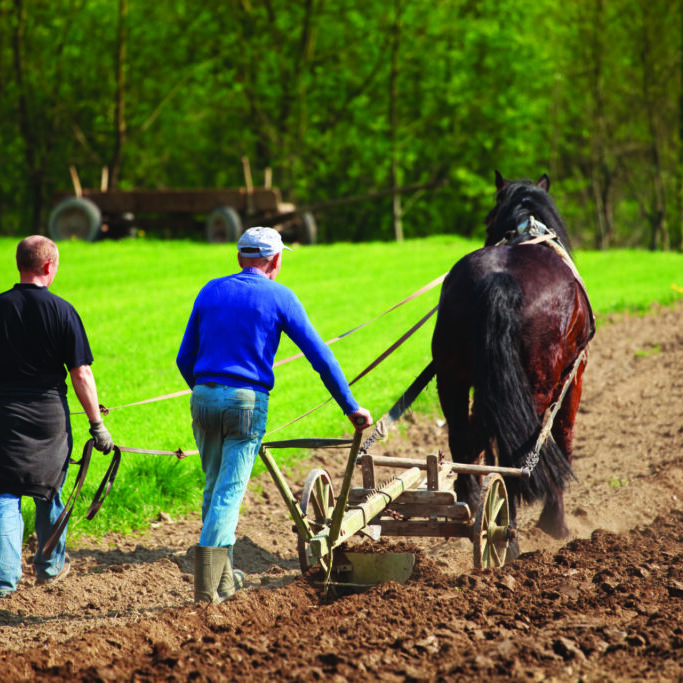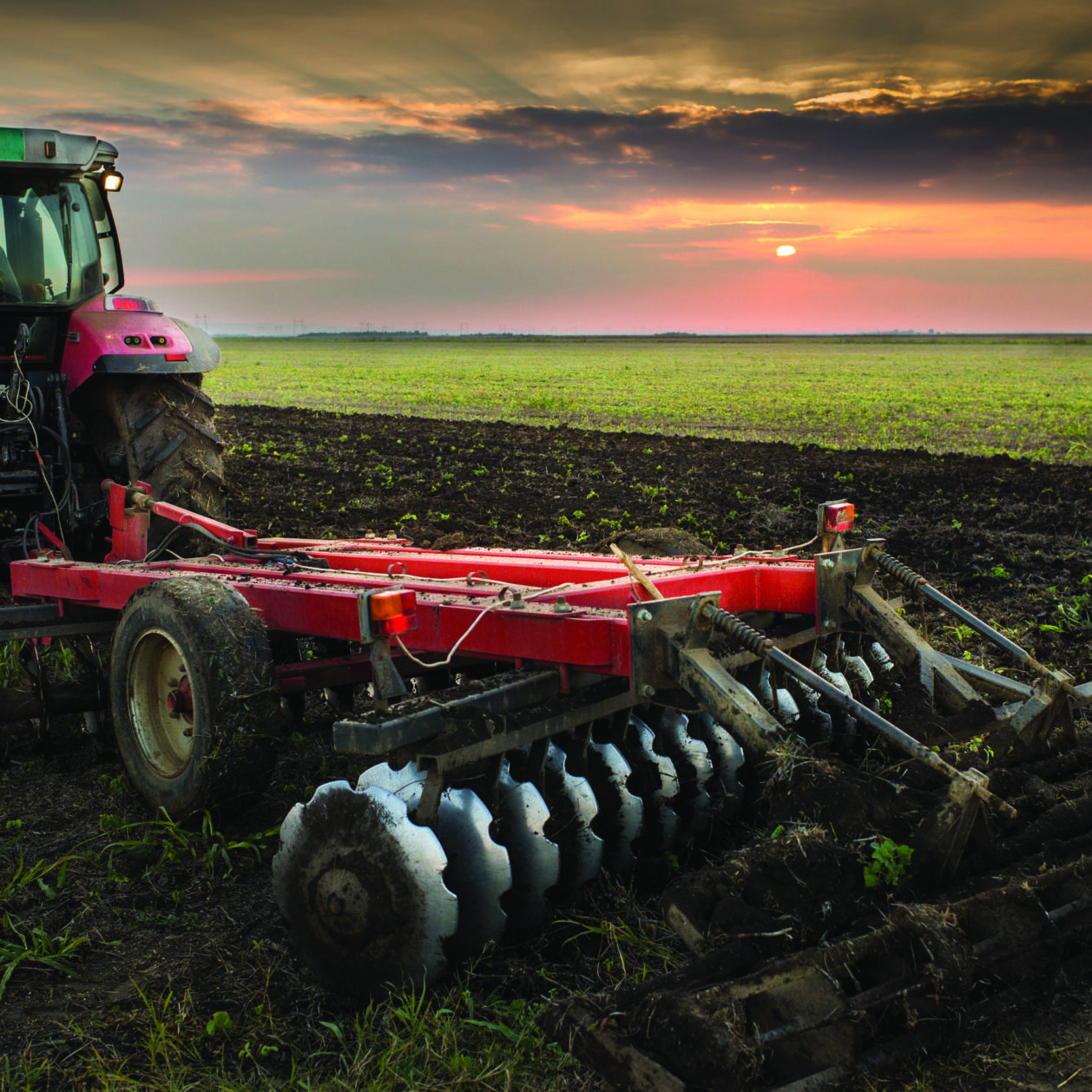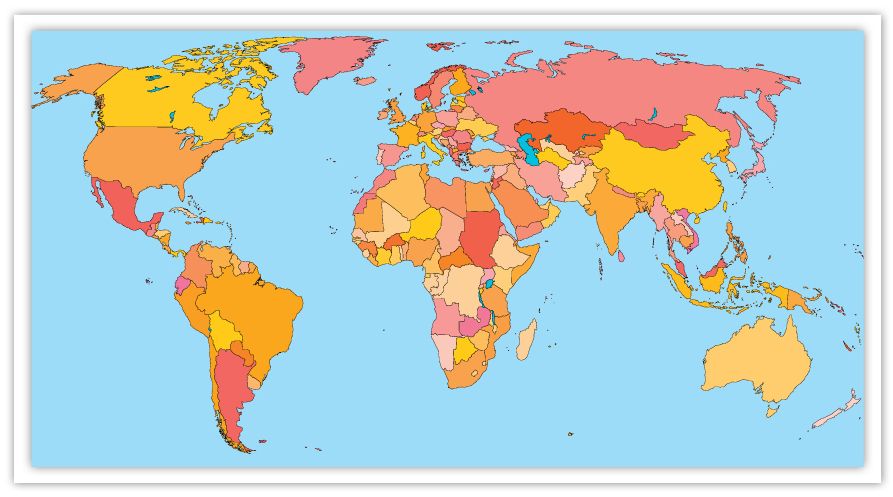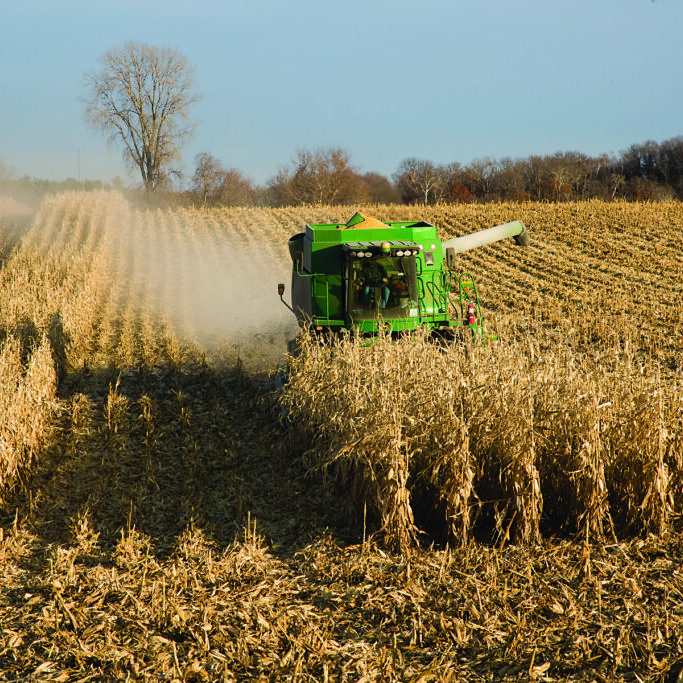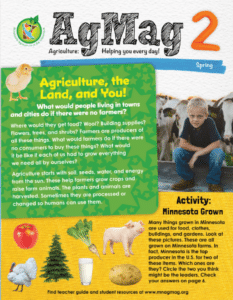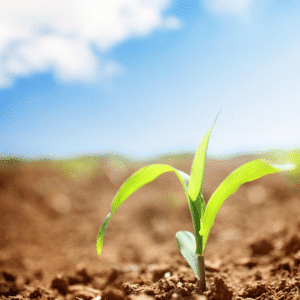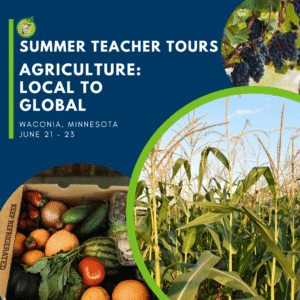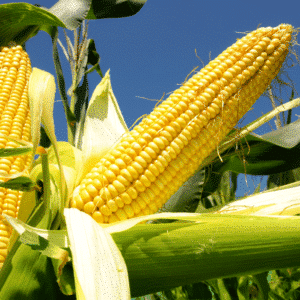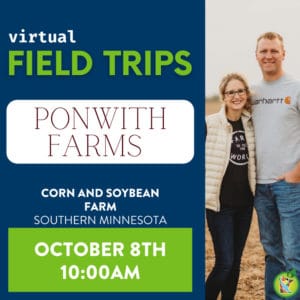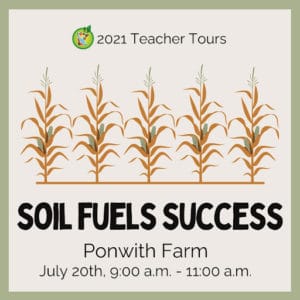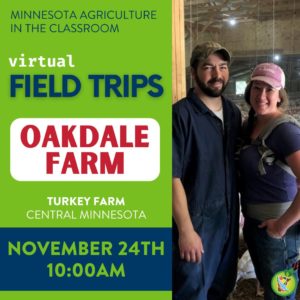Commodity: Corn
Corn! You may find this vegetable in your school lunch some days. It might also be one of your favorite summer treats, served right on the cob. But did you know that most corn grown in Minnesota is not for people to eat? Corn is also an important commodity crop in Minnesota. How much do you know about this treat?
Many Kinds of Corn
Did you know there are different kinds of corn grown for different purposes? There are three primary kinds of corn.
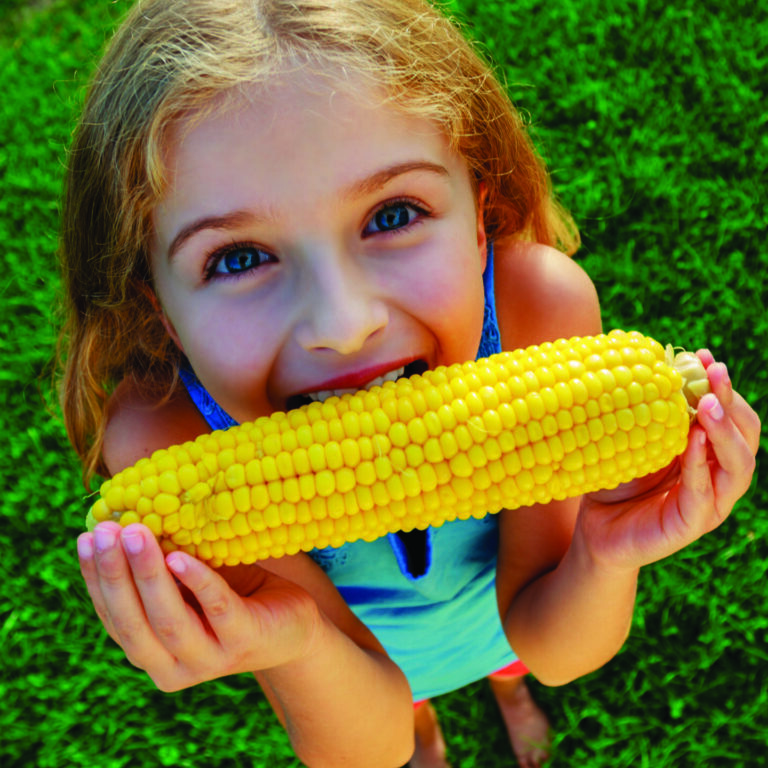
Sweet Corn
This is the kind of corn we eat. You may grow it in your own garden, or you may buy it at the grocery store or farmers market. There are many ways to eat it: Right off the cob, canned, or frozen.
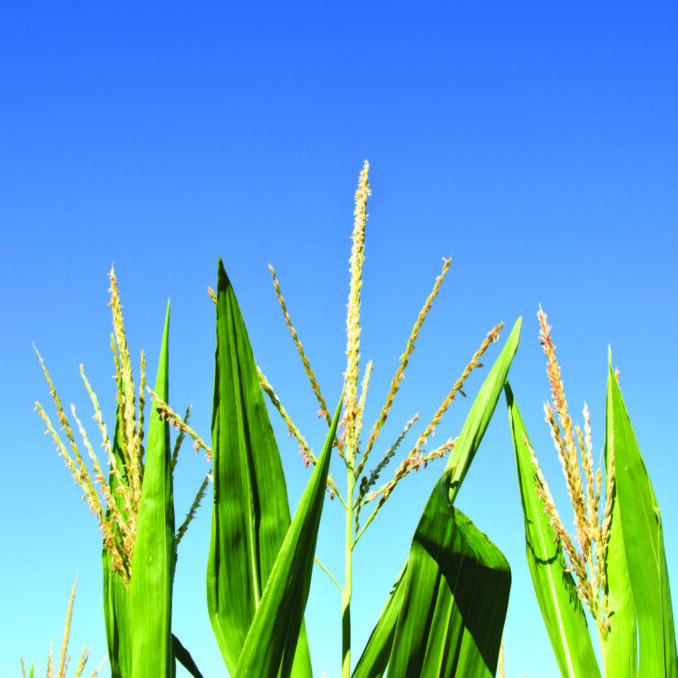
Field Corn
Did you know that 90% of corn grown in Minnesota is field corn? Field corn is also known as dent or feed corn. It is hard on the outside and starchy on the inside. It is most often used as food for animals, but it can be found in products you use every day.
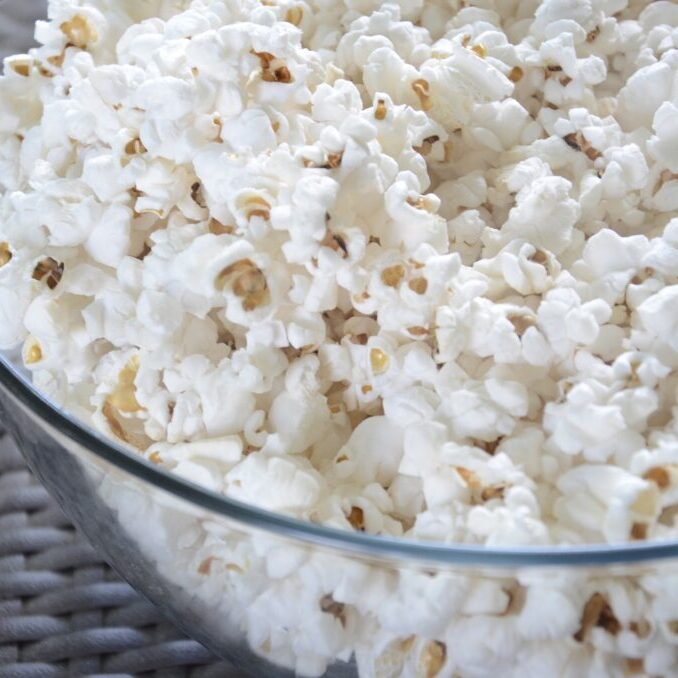
Popcorn
This is a special type of corn that retains water within the kernel. When the kernel is heated, the water also heats and builds up pressure. This pressure causes the kernel to turn inside out, and then you have hot, fluffy popcorn.
Growing Corn
In warm-weather climates, corn can be grown year-round. Here in Minnesota, it is planted during April and May, and harvested in October and early November. The harvest is done with a large combine. The combine removes the ear of corn from the husk and separates the kernels from the cob. After harvest, corn is usually dried and sold to a grain elevator, ethanol plant, or corn processing plant.
93% of field corn grown in Minnesota uses biotechnology. Do you know what biotechnology is? It’s a branch of science. Scientists use it to look at the genes in plants and make changes to them. The changes made can help plants be more resistant to insects and disease, which makes them easier to grow. They can also help plants adapt to different environments so they may be grown more places. It is also possible to add more nutrition to some plants, to make them even healthier to eat.
The Corn Plant
This is an unusually large plant. Corn stalks can grow 7-10 feet tall! Corn has very strong roots to support such a large stalk. A tassel grows at the top of each cornstalk. The tassel has hundreds of small flowers that produce pollen. Long leaves grow out from the stalk.
Ears of corn grow where the leaves join the stalk. Special leaves, called husks, protect each ear. Each ear may have 10-18 (or more) rows of kernels, always in pairs. Each ear will have between 400-800 kernels. Every kernel has a thread that runs from the kernel up the row and sticks out at the end of the ear. This is called the corn silk. Each silk has to be pollinated to produce a kernel of corn. If a pollen grain from the tassel lands on a corn silk, than a kernel will form.
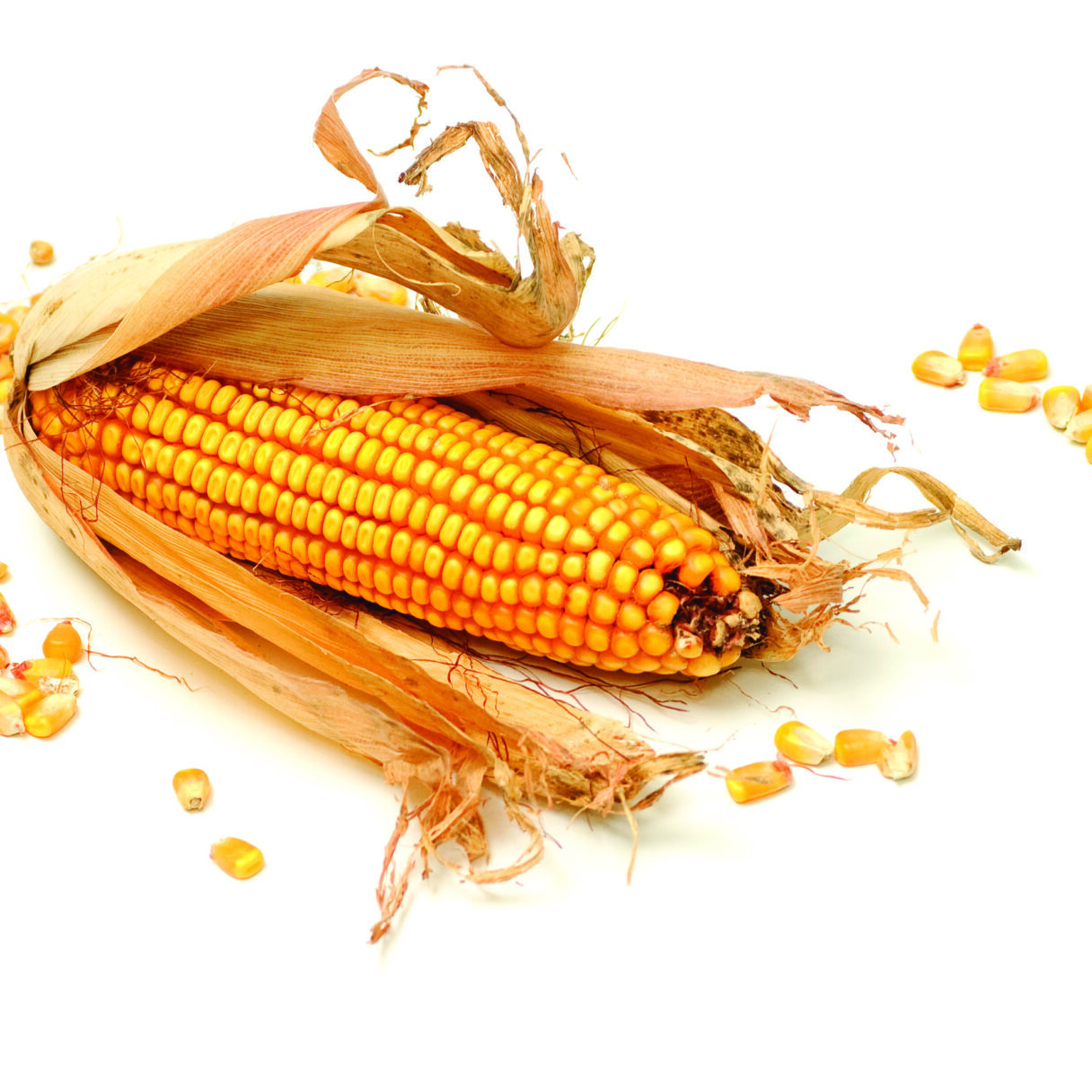
Corn in Minnesota
Minnesota is a major grower of corn. We are 1st in the U.S. for growing sweet corn and 4th for growing field corn.
How is Minnesota corn used?
- 42% is exported to other countries.
- 37% is processed into things like ethanol.
- 14% is used for animal feed.
- 7% is used in other ways.
Corn: America’s Gold
Early settlers coming to America often hoped to find gold. But they found an even greater treasure — one that could feed the world — when Native Americans shared corn, the golden grain. America’s native peoples have grown corn for centuries. Corn was such an important crop that many of their villages and cities built up around it. Millions of people around the world still depend on corn as a main food for themselves and their animals.
Most of the corn grown in Minnesota is field corn. Its hard kernels are a main ingredient in livestock feed and industrial products. What is the sweet and tasty corn that you eat called?
Corn is more than food. Those golden kernels have more than 3,000 uses!
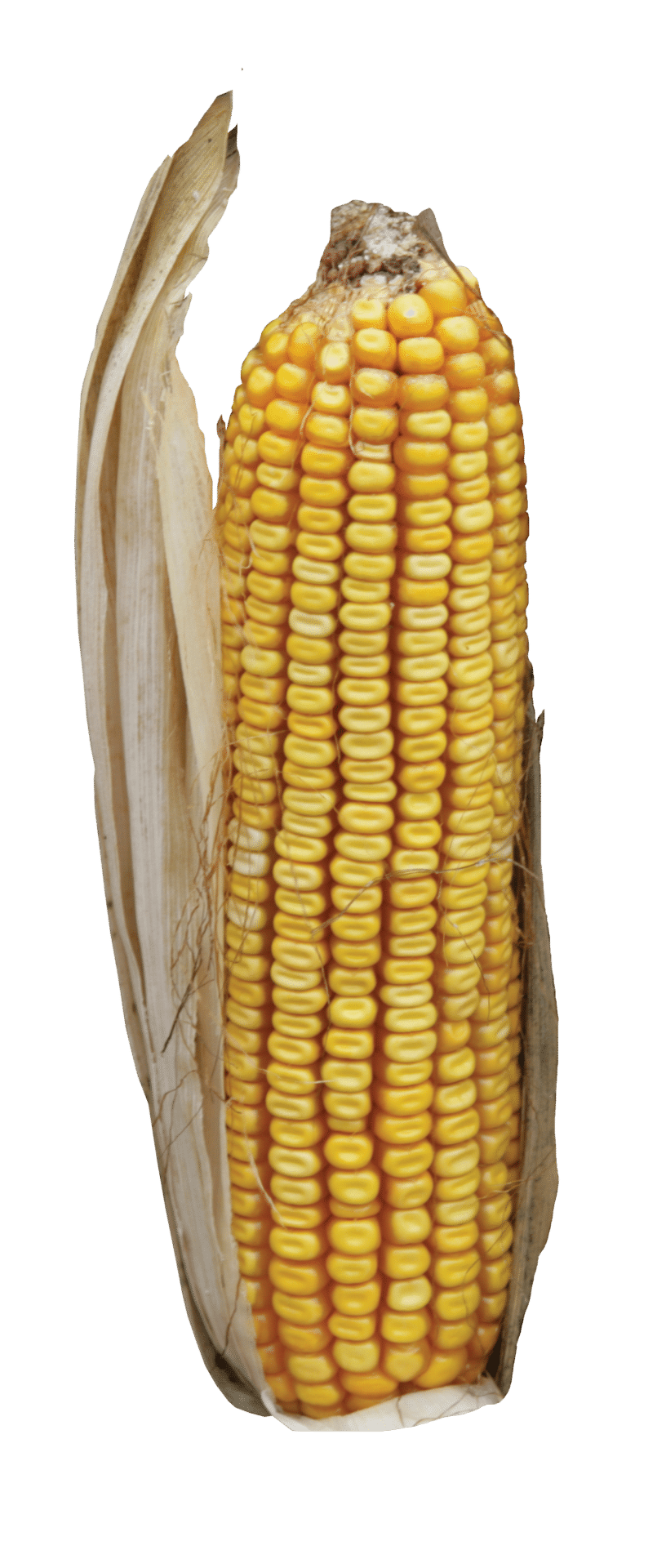
King Corn
Soybeans and corn are Minnesota’s leading cash crops. These are the top crops that feed our cattle, hogs, and poultry. They are processed into thousands of other uses in human foods, industries, fuels, and more.
Planting and Harvesting
Soybeans and corn, both row crops, are planted in April and May. During the summer:
- Soybeans flower and produce pods (beans).
- Corn grows tassels and silks, producing ears with kernels.
- Both crops are harvested in the fall.
Storage and Transportation
Soybeans and corn are stored in grain bins on the farm or at local elevators. They are kept dry to prevent mold and spoiling. Farmers raising livestock often grind and mix soybeans and corn with other grains to feed their animals. Many farmers sell their crops, which are then hauled away from the farm by truck.
Processing
Cleaning is the first step. Then crops are processed in different ways, depending on how they will be used. Corn may be soaked, softened, pressed, ground, cooked, mixed, or sometimes flaked before it is further processed into many different products.
Farm Crops
Crops feed both animals and people. Many of the foods you eat come from these crops. Most must be changed before you can use them. Then they look different on your plate.
Virtual Field Trips About Corn
Minnesota Agriculture in the Classroom is showing you around a variety of facilities where corn is grown, harvested and utilized in a variety of ways. Learn more about Minnesota corn below!

